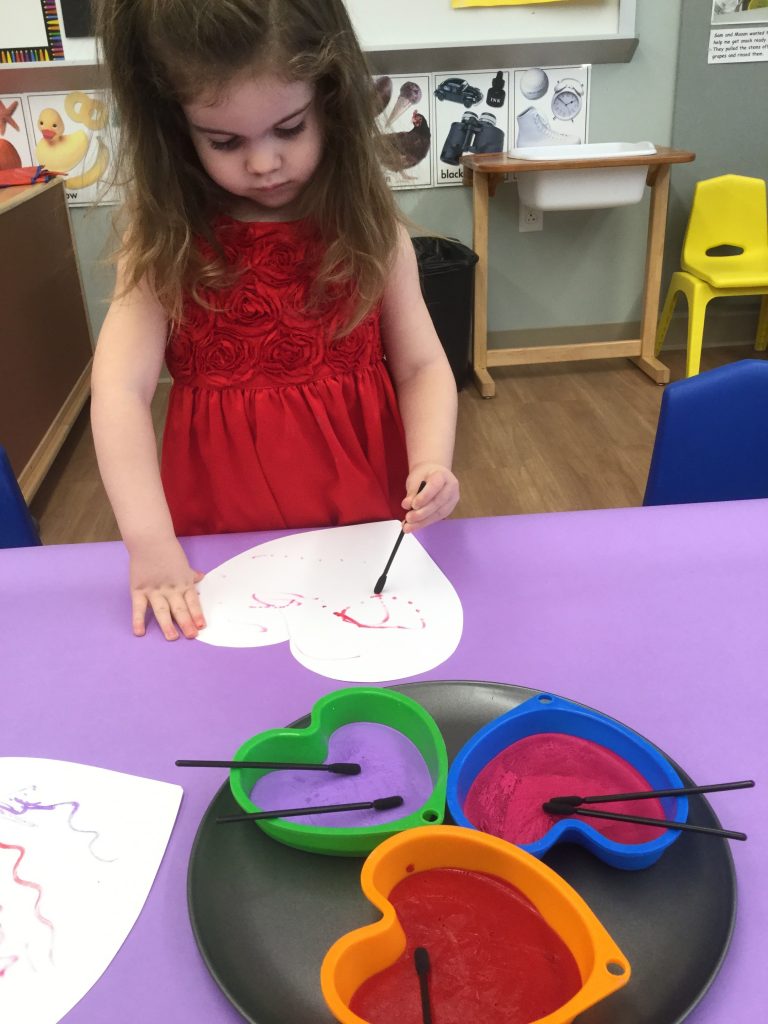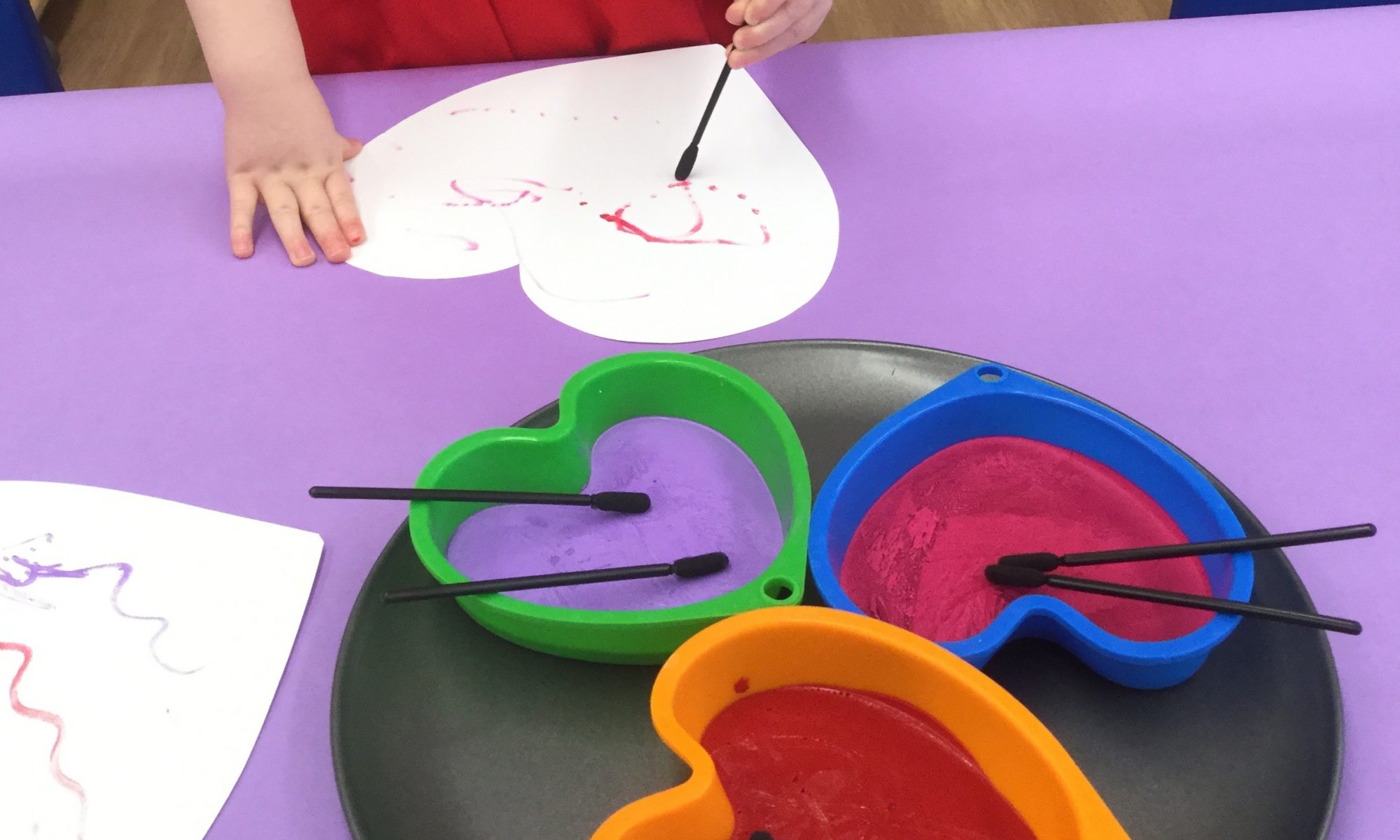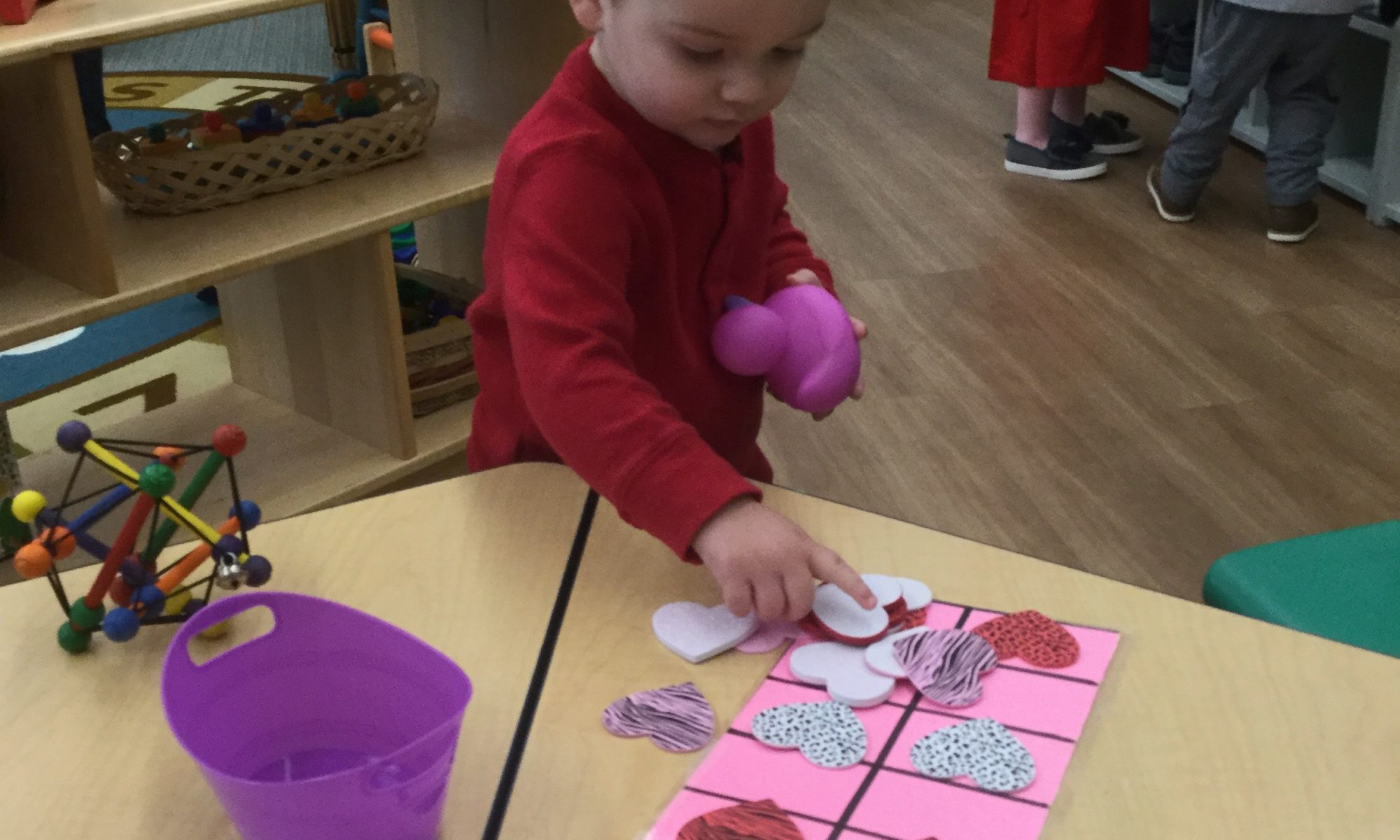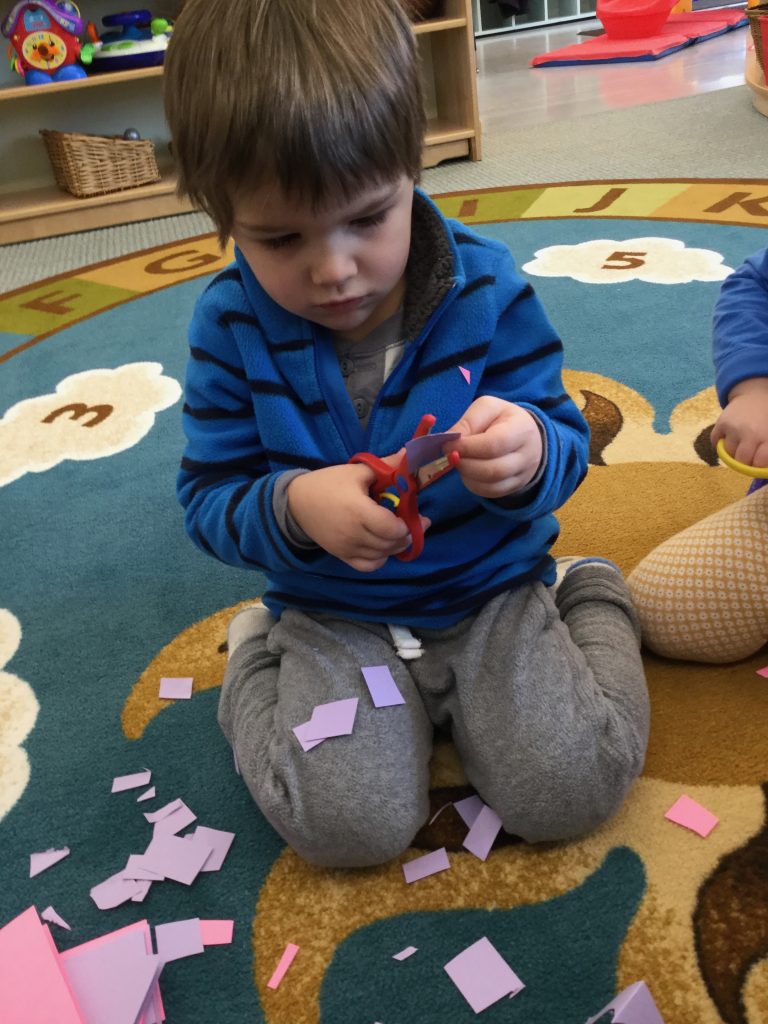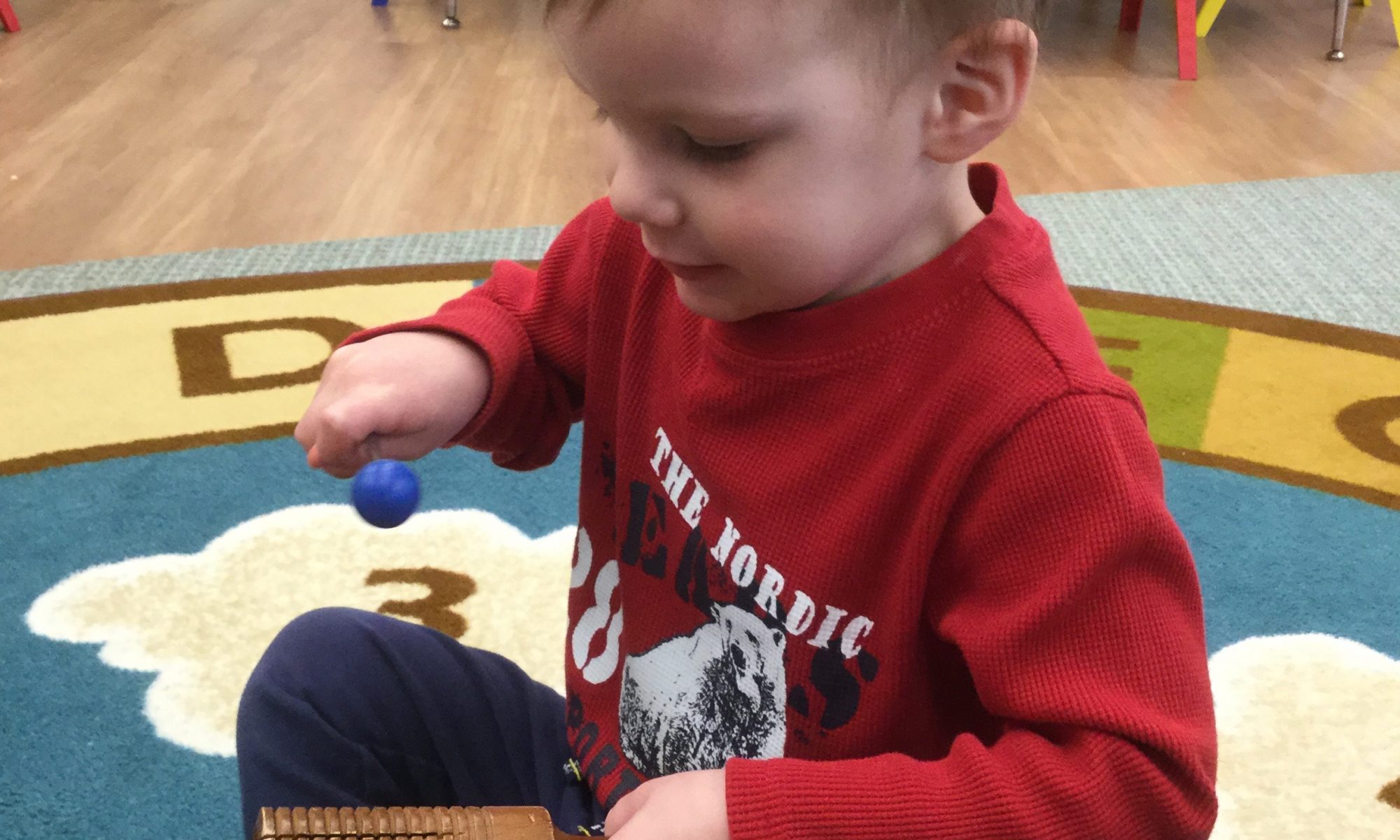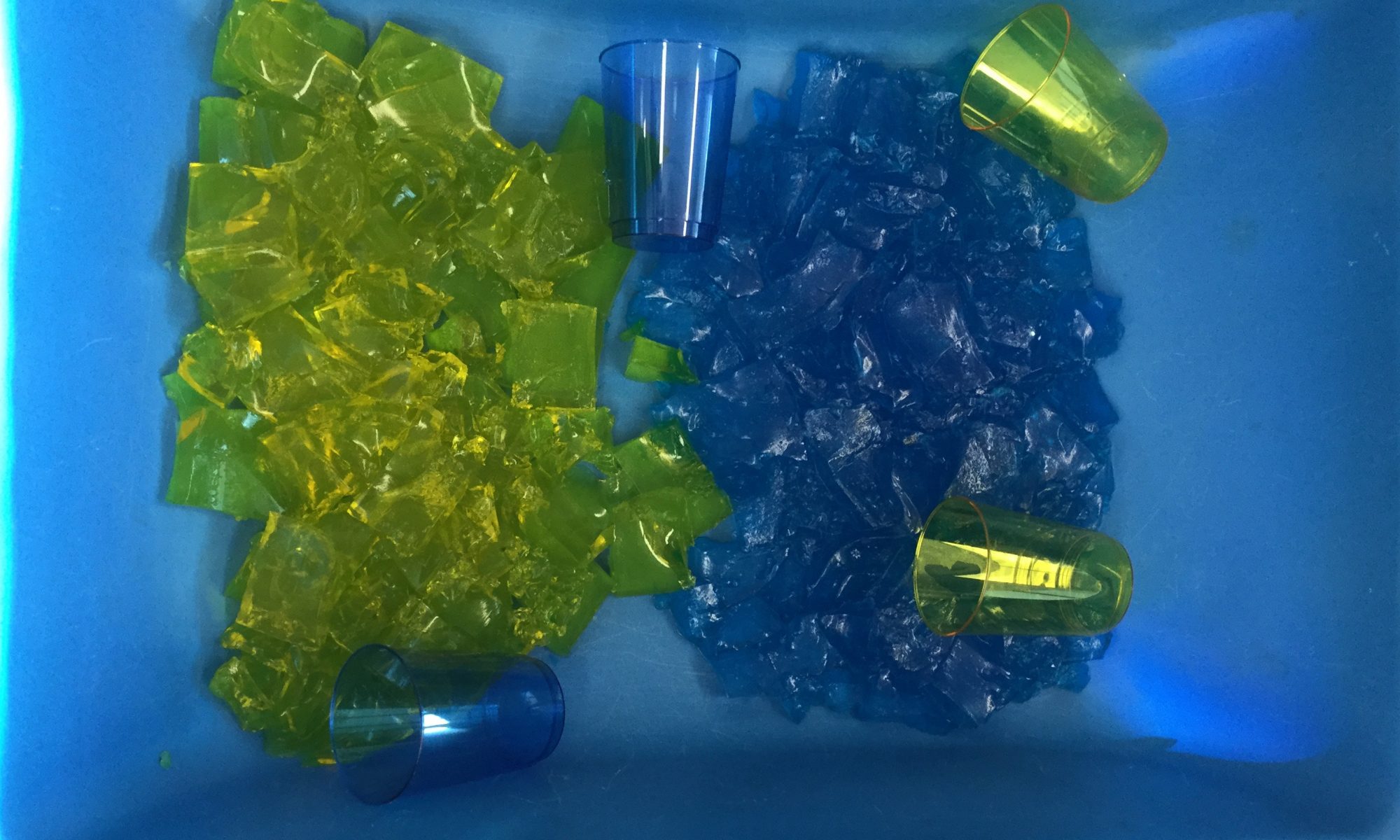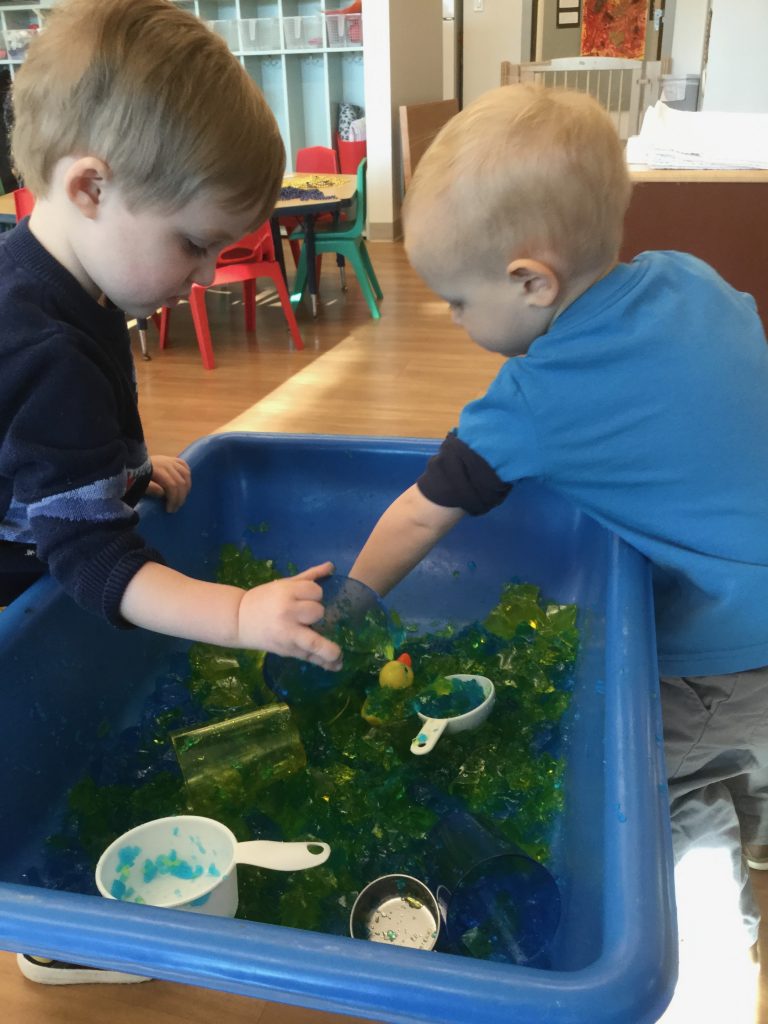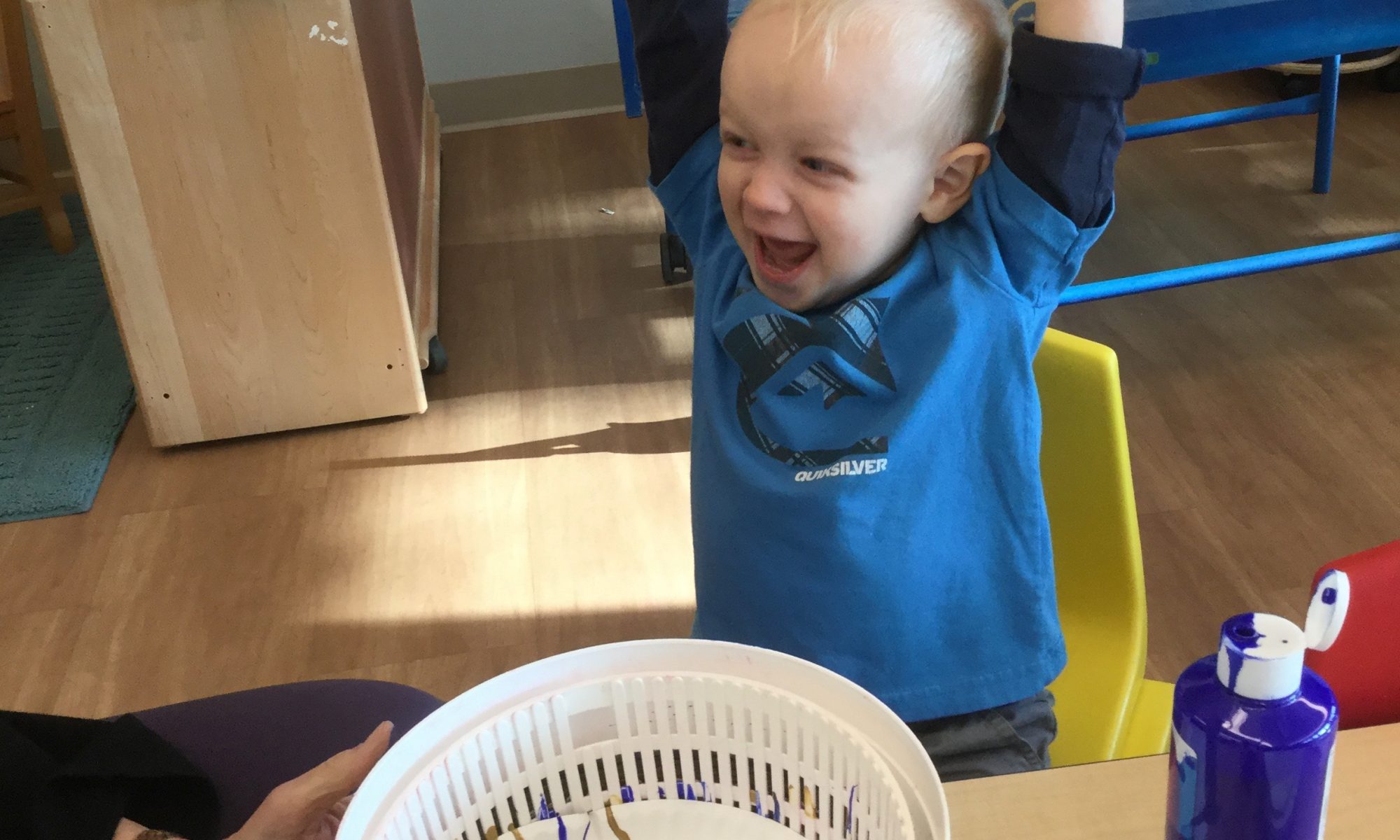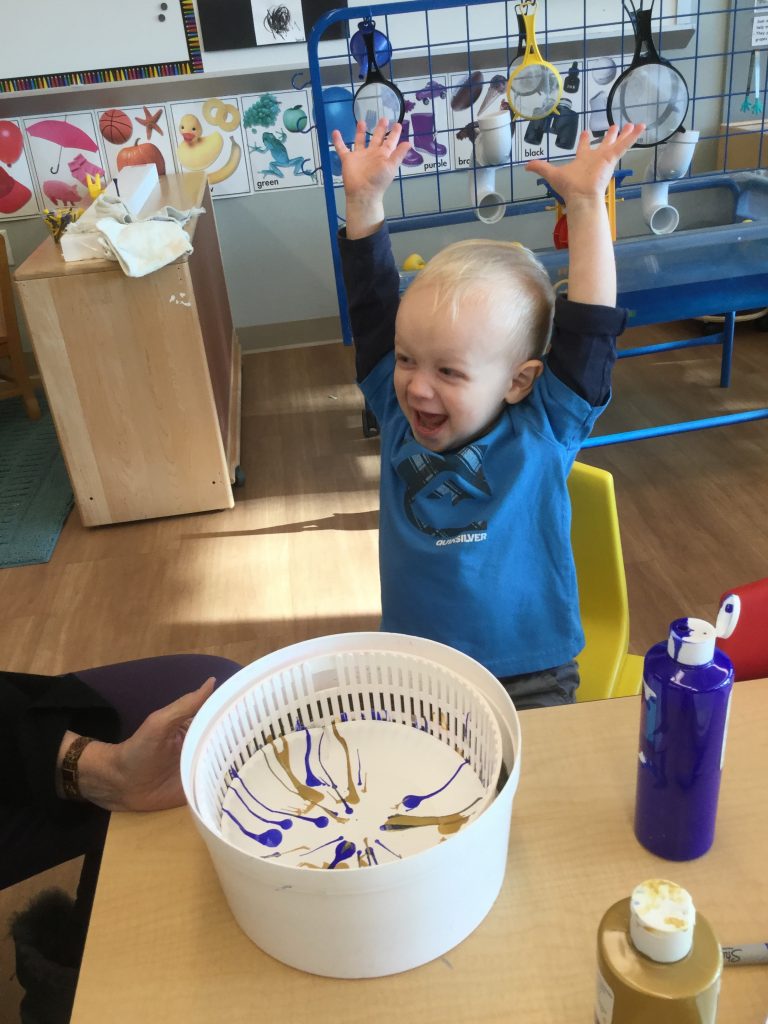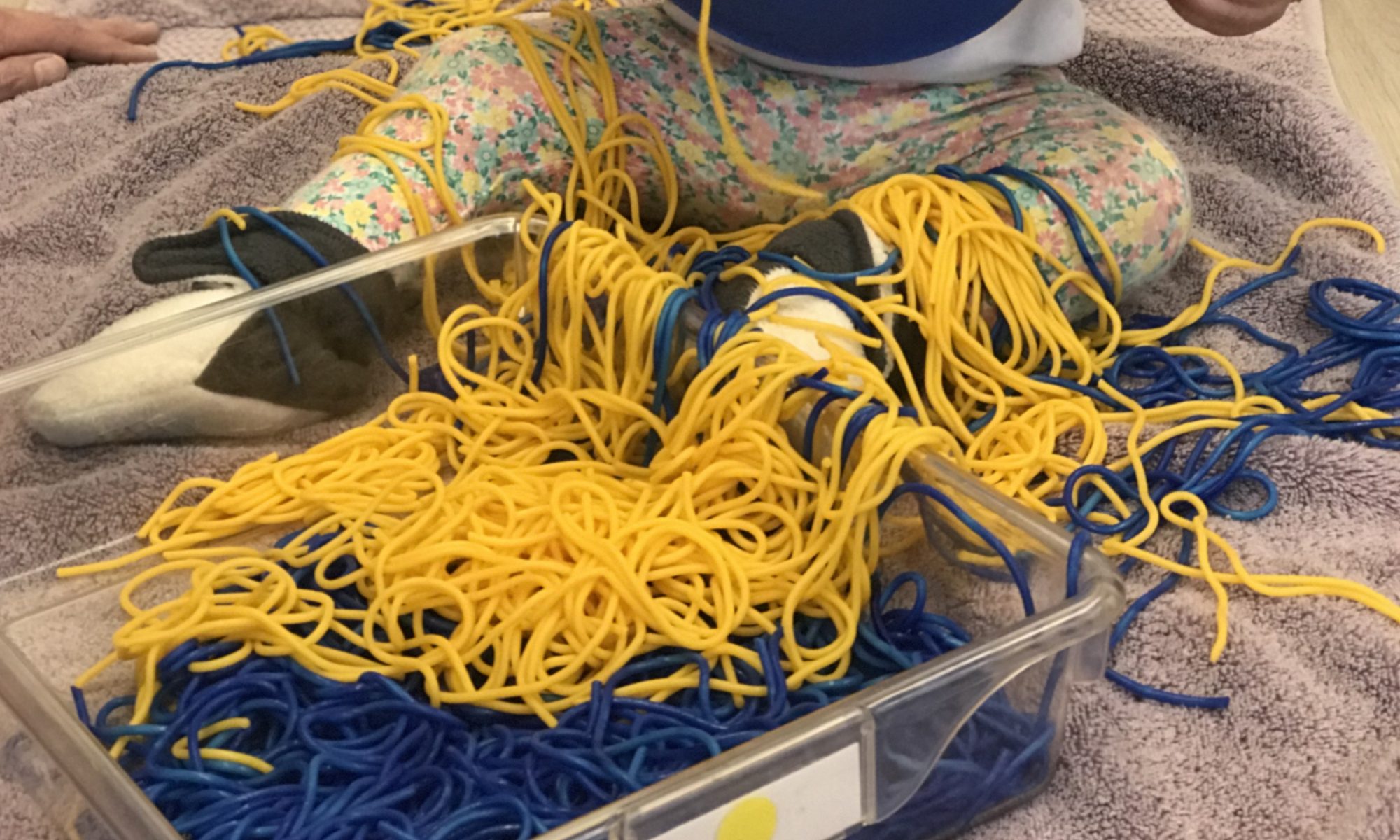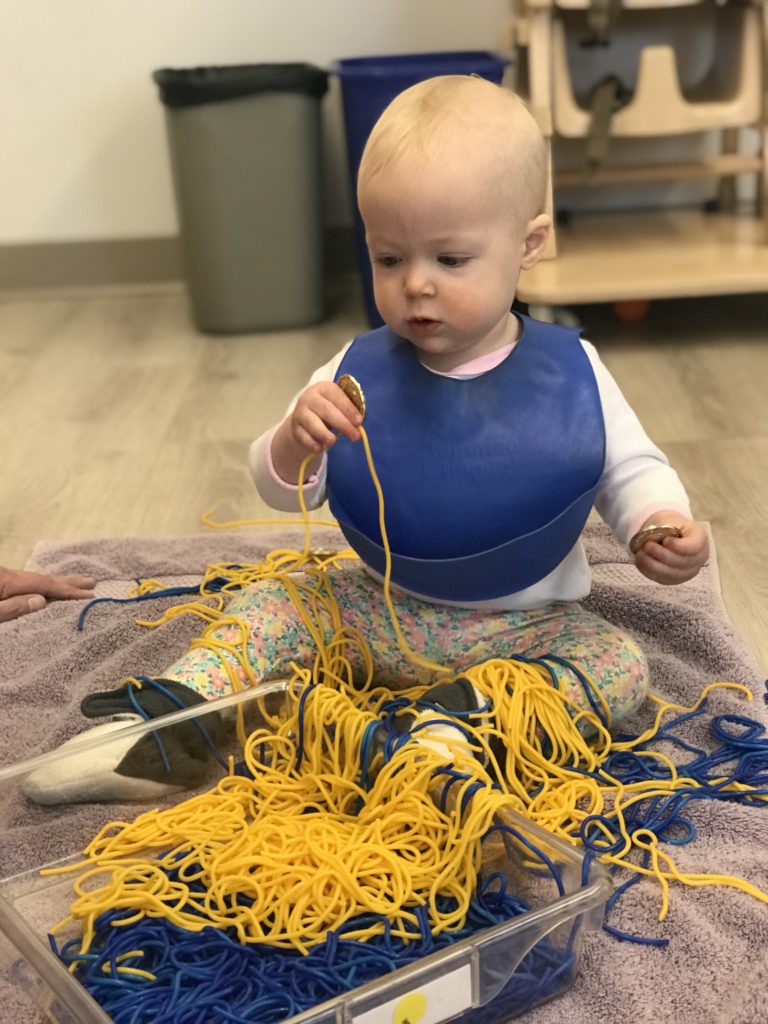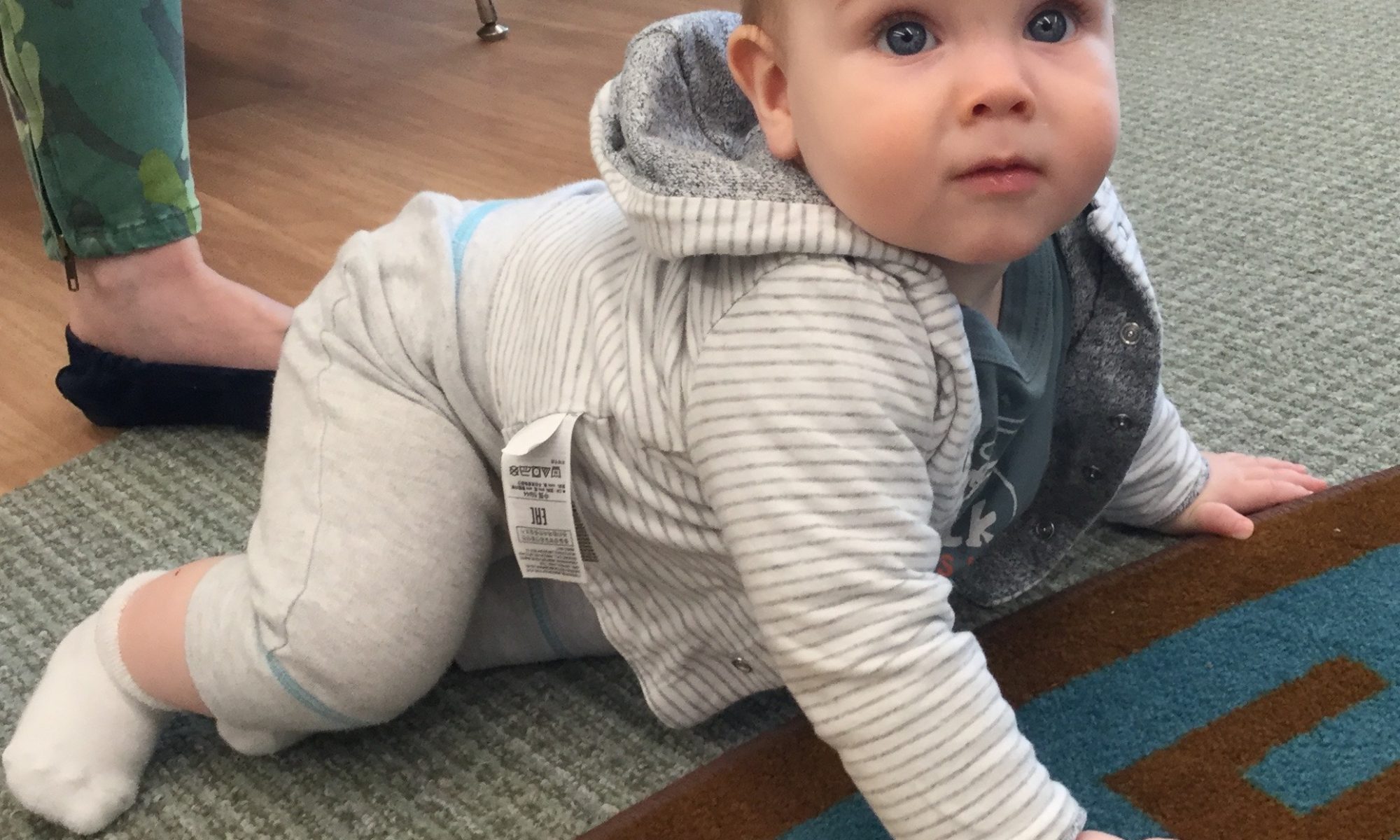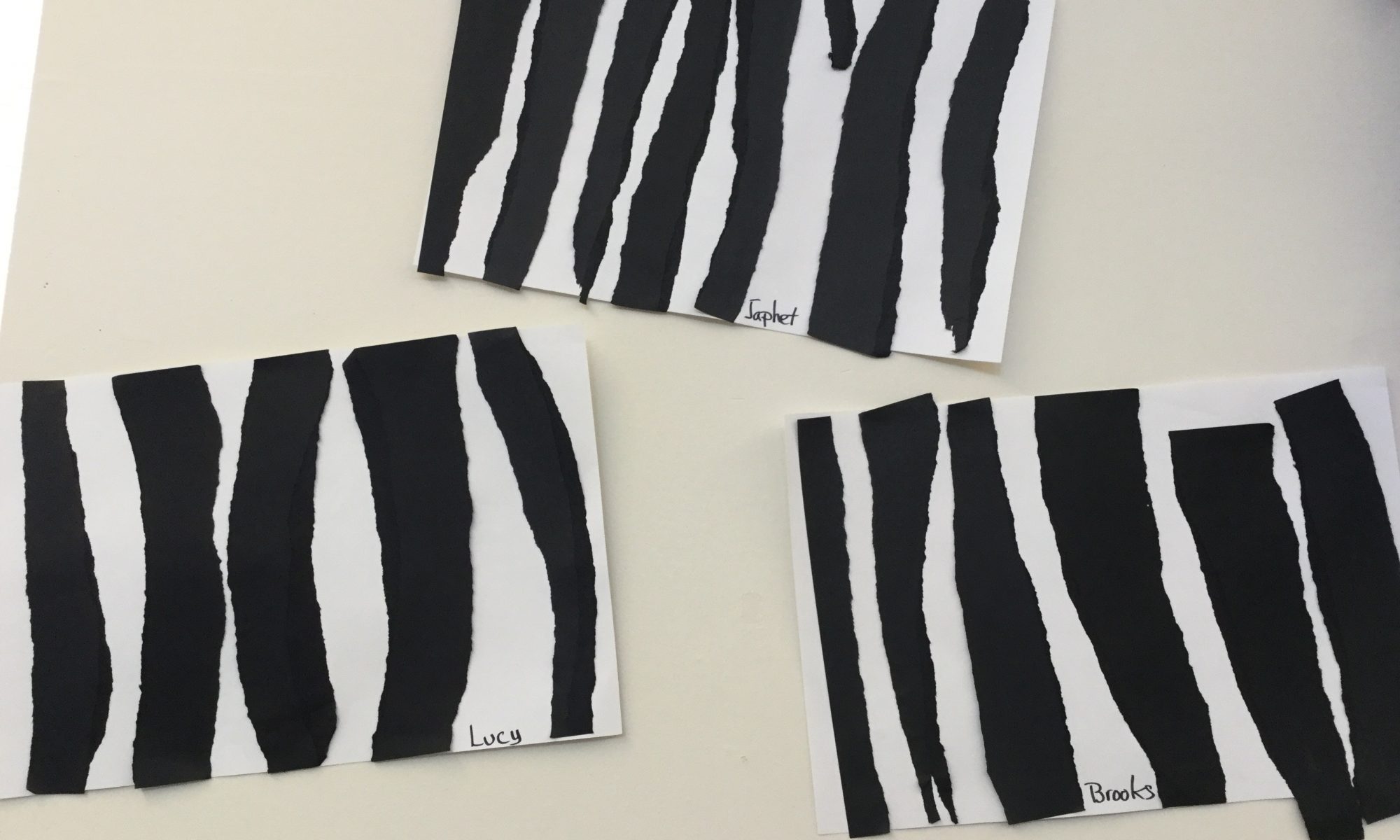Materials:
White construction paper
3 small plastic containers
Q-tips
3 different colors of tempera paint
Directions: Pour enough of each color of the liquid tempera paint into each of your containers to cover the bottom of the container. We used pink, red and lavender. Put the containers in the freezer until frozen. When the paint is frozen, remove it from the freezer and let it sit for 10-15 minutes to soften a bit. (Leave it in the container!) Because Valentine’s Day is close, we cut the white construction paper into hearts. We had small sponge applicators to paint with, but you could use Q-tips instead. You could also use small daubers, or spongy eye shadow applicators! The children loved how the frozen paint covered the paper. As it melted, it became creamier and covered even better! When your child finishes painting, discard the Q-tips and put the paint containers back in the freezer for another day, if you’d like!
